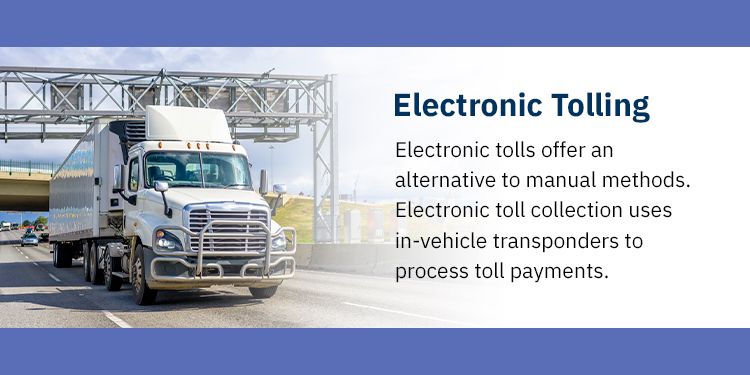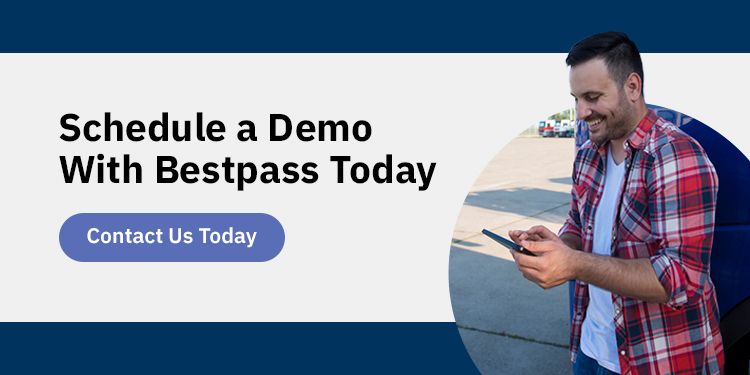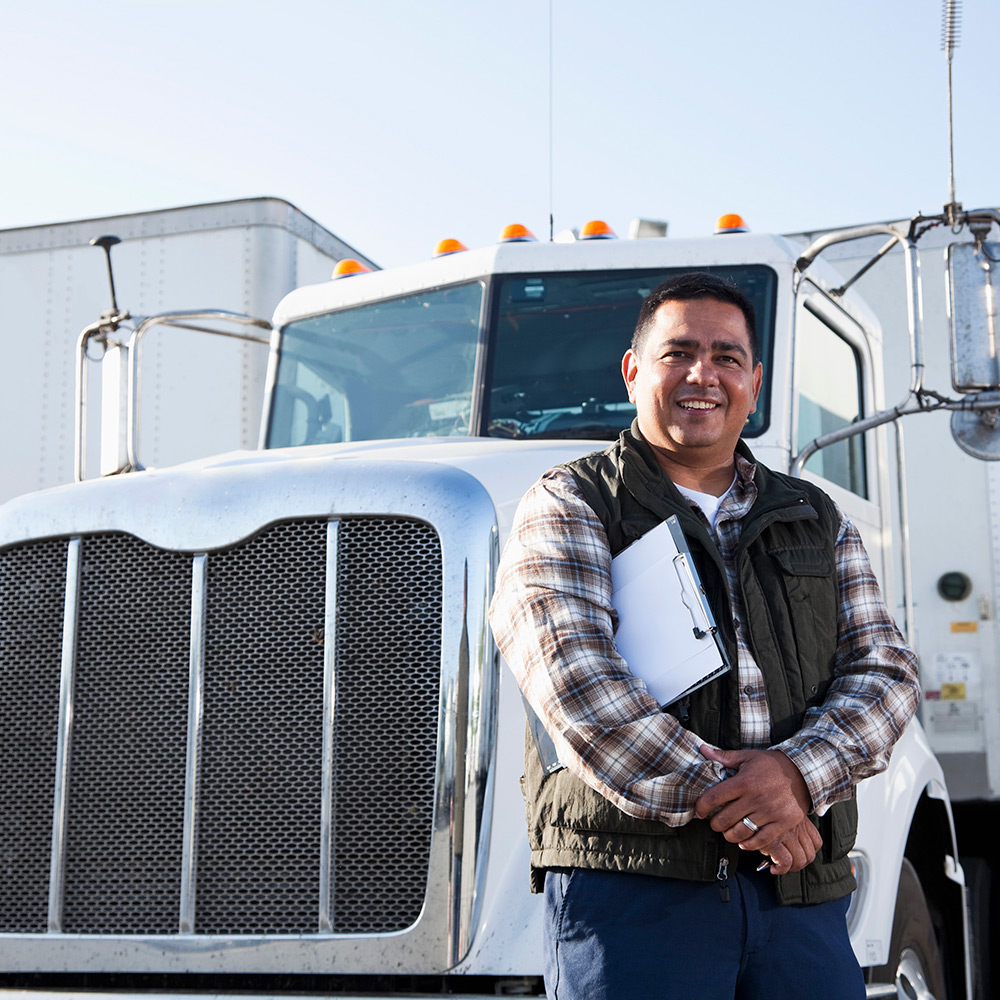
Tolling Methods for Fleets: Which Option Is Right for Your Business?
Tolls are a major expense for trucking fleets. As vehicles travel the country with shipments, they might pass through various toll roads. Preparing for these costs and organizing required payments takes a significant amount of administrative work.
The two major tolling options are traditional and electronic tolls. Traditional booths require drivers to present cash or a card, while electronic choices allow for automatic or later payments. By learning more about these tolling methods, you can prepare your fleet more effectively.
What Are the Types of Tolling Methods?
Your truck fleet can use various methods to pay toll costs during trips. Depending on the location, you might have more than one payment option when passing through a toll booth. You can prepare fleet drivers to cover toll costs by understanding different choices.
These are two major types of tolling methods for fleets:
1. Traditional Tolling
Traditional toll booths use manual methods to collect toll payments. Employees sit in booths and calculate toll costs based on the number of axles in your vehicle. They inform drivers of the required payment, accepting the amount directly from the driver. After the worker processes the money, they lift the gate and allow the vehicle to proceed.
Traditional booths typically accept both cash and credit cards to pay for toll expenses. Fleet drivers need to keep the card or cash amount in their vehicles to prepare for manual payments. If you don't have enough to cover the upfront cost, the toll booth bills you electronically or in other formats.
This tolling type has benefits such as accurate billing to avoid future billing discrepancies. Traditional toll locations let you pay immediately, completing the transaction right away. The worker ensures you pay the right amount and finalizes the process. By paying right immediately, you avoid later billing complications and address everything in the initial transaction.
However, traditional toll booths can also have disadvantages like:
- Long lines: Manual booths can take longer to process payments than electronic processes. The structure can lead to longer lines, adding extra time to trips. Extensive delays can prevent drivers from meeting deadlines, cause fleets to spend more on fuel and have other negative impacts.
- Increased pollution: Long toll lines require many vehicles to idle while they wait for their turn to pay. The longer you wait, the more fuel emissions are released into the air. In response, many companies turned to electronic solutions that let cars move through booths faster.

2. Electronic Tolling
Electronic tolls offer an alternative to manual methods. Electronic toll collection uses in-vehicle transponders to process toll payments. As vehicles pass through toll gantries, electronic antennas detect the transponder and charge the corresponding account with the toll amount. Ground sensors determine the vehicle's number of axles, which aligns with the toll cost. Drivers pass directly through the booth instead of stopping, letting the process occur more quickly.
If you don't have a transponder, the system cameras take a picture of your license plate in a method called toll-by-plate. They use license plate details to identify the organization or individual responsible for the car, then send a bill to the address.
Electronic tolls have many conveniences for drivers, and many locations around the United States have adopted these options. Some locations use a combination of manual or electronic options, while others just offer one or the other. Transponder lanes are usually identified with specific signs, so drivers know to merge into that particular lane.
Electronic or cashless lanes have benefits like:
- Faster toll movement: Electronic tolling streamlines the collection process, letting vehicles pass without interacting with an employee. The system automatically detects transponders or takes photos of license plates if necessary. The faster process mitigates lengthy lines and helps fleet drivers stay on track for deadlines.
- No cash needed: Electronic tolls remove the need to carry a certain amount of cash or a particular credit card during travel. Whether they have a transponder or let the system photograph their license plate, drivers don't have to manage toll payments and can drive through the toll gate with minimal hassle.
- Automatic charges: Many toll transponders are connected to prepaid accounts, and tolling authorities remove the money from the account after processing the charge. The automatic transaction eliminates the need for manual payments or remembering to pay invoices later.
However, electronic toll methods might have more payment complications. Toll-by-plate systems have additional wait times to receive invoices, which can make payment processes more confusing. Fleets must match each route, driver and vehicle with the corresponding invoice, adding to administrative loads. Different tractor-trailer plates or new vehicle models can cause more complications.
Toll management software helps organize your fleet's finances, keeping all toll information gathered in one accessible space. Reporting tools track monthly and annual toll expenses, helping fleets stay updated on required payments. Automated features reduce your manual administrative workloads and increase accuracy.
Adopting the All Electronic Tolling Method
Many tolling booths have adopted all electronic tolling (AET). Although some manual toll payments exist via gated booths, these are becoming obsolete. New locations are adopting electronic tolling, and existing toll locations are working to upgrade their payment methods to AET.
Electronic tolling can streamline the tolling process. While manual collection can only handle around 350 vehicles every hour, AET systems can handle more than five times that flow rate, handling between 1,200 and 1,800 vehicles each hour. Additionally, these systems can save around $130,000 per lane in maintenance and operating costs annually compared to manual toll methods.
AET offers benefits like:
- Reduced payment complications: Your fleet size has a large impact on toll management. Larger fleets have to track more vehicles, which can cause more payment complications. Whether you equip drivers with credit cards or in-vehicle transponders, you must keep track of them for each vehicle. Toll-by-plate methods require you to manage and pay invoices after drivers pass through the toll booth.
- Potential savings: Toll expenses are an integral cost for trucking fleets. Paying upfront can minimize missed or late payments later, but requires advanced planning and calculations. However, many toll booths offer discounts for using transponders instead of traditional payments, so you save money overall. In addition, toll management software helps you monitor payments and identify low-cost tolls, which reduces expenses even further.
Schedule a Demo With Bestpass Today
Preparing your fleet for tolls helps you manage them more effectively. As more toll locations adopt all electronic tolling, you can keep track of your toll costs with Bestpass toll management solution. We help you build a customized transponder plan that cuts your administrative toll workload.
Reduce toll costs and manual tasks for creating and organizing toll reports. The Bestpass solution provides on-demand reporting for toll expenses, letting you view charges at any time. Advanced analytics provide insights into average route costs, letting you optimize trips to reduce toll expenses. The thorough data helps you limit violations and improve toll expense management.
Contact Bestpass today to learn more about how we can assist your fleet.


